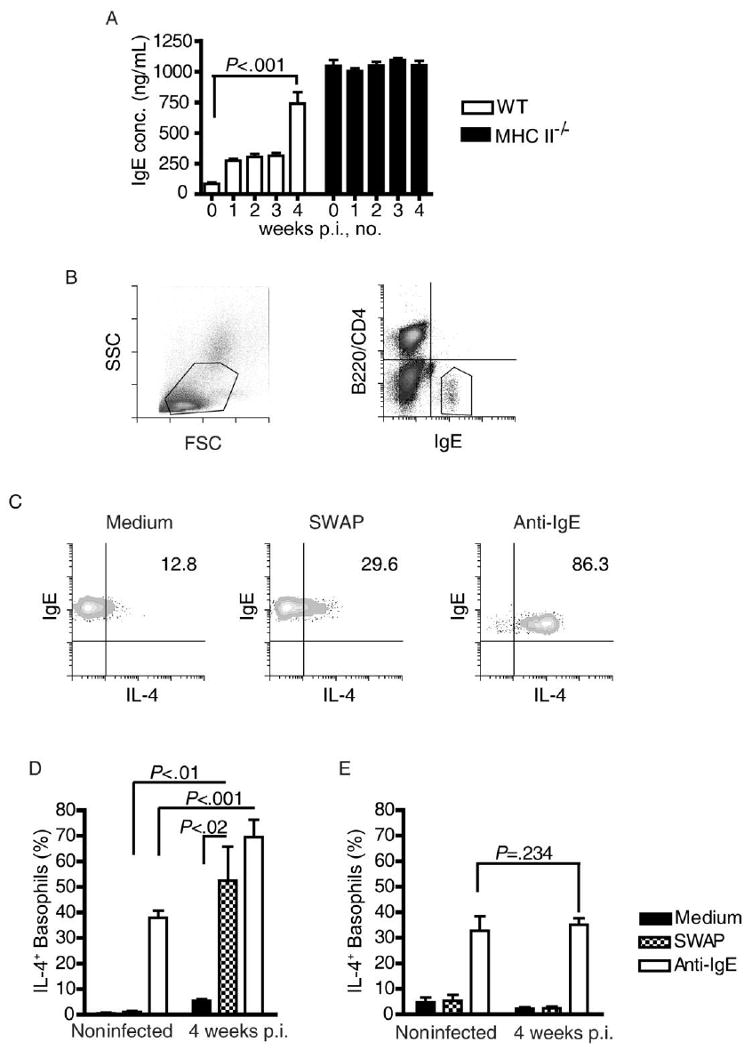Figure 3.

Prepatent schistosome infection and licensing of basophils to produce interleukin (IL)–4 in response to worm antigens. A, Concentrations of total immuoglobulin E (IgE) in the plasma of wild-type (WT) and major histocompatibility complex class II–deficient (MHC II−/−) mice during prepatent schistosome infection were measured by enzyme-linked immunosorbent assay. B, Flow cytometric identification of basophils by light-scattering properties (left) and presence of cell-surface IgE in the absence of B220 and CD4 expression (right). C, Flow cytometric quantification of IL-4 production by circulating basophils from a representative infected WT mouse when stimulated with soluble worm antigen preparation (SWAP) or anti-IgE antibody. D, IL-4 production by basophils from noninfected WT mice and WT mice infected for 4 weeks, in response to medium alone, SWAP, or anti-IgE antibody. E, IL-4 production by basophils from noninfected MHC−/− mice and MHC−/− mice infected for 4 weeks, in response to medium alone, SWAP, or anti-IgE antibody. Five mice were included in each group. The significance of all differences was tested using Kruskal-Wallis tests, followed by Dunn's multiple comparison posttests. All data are representative of at least 2 independent experiments. conc., concentration; FSC, forward scatter; IL-4+, IL-4 positive; p.i., post infection; SSC, side scatter.
